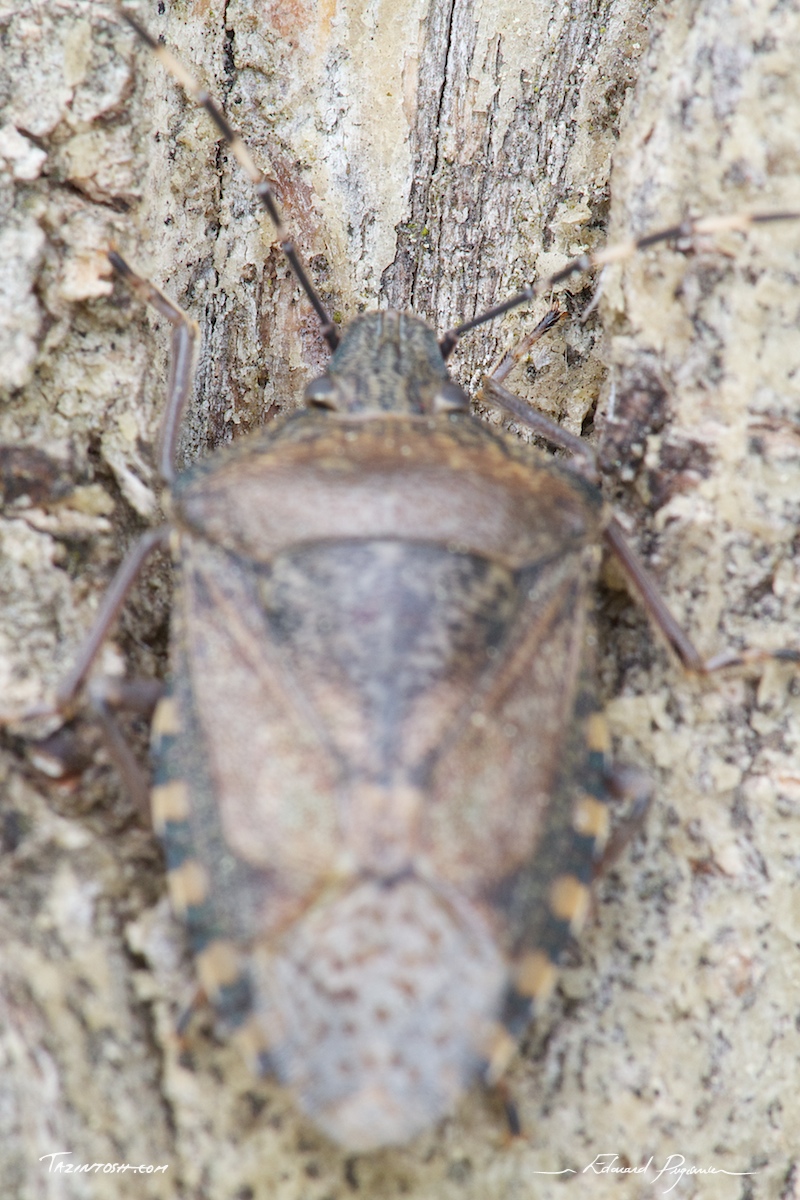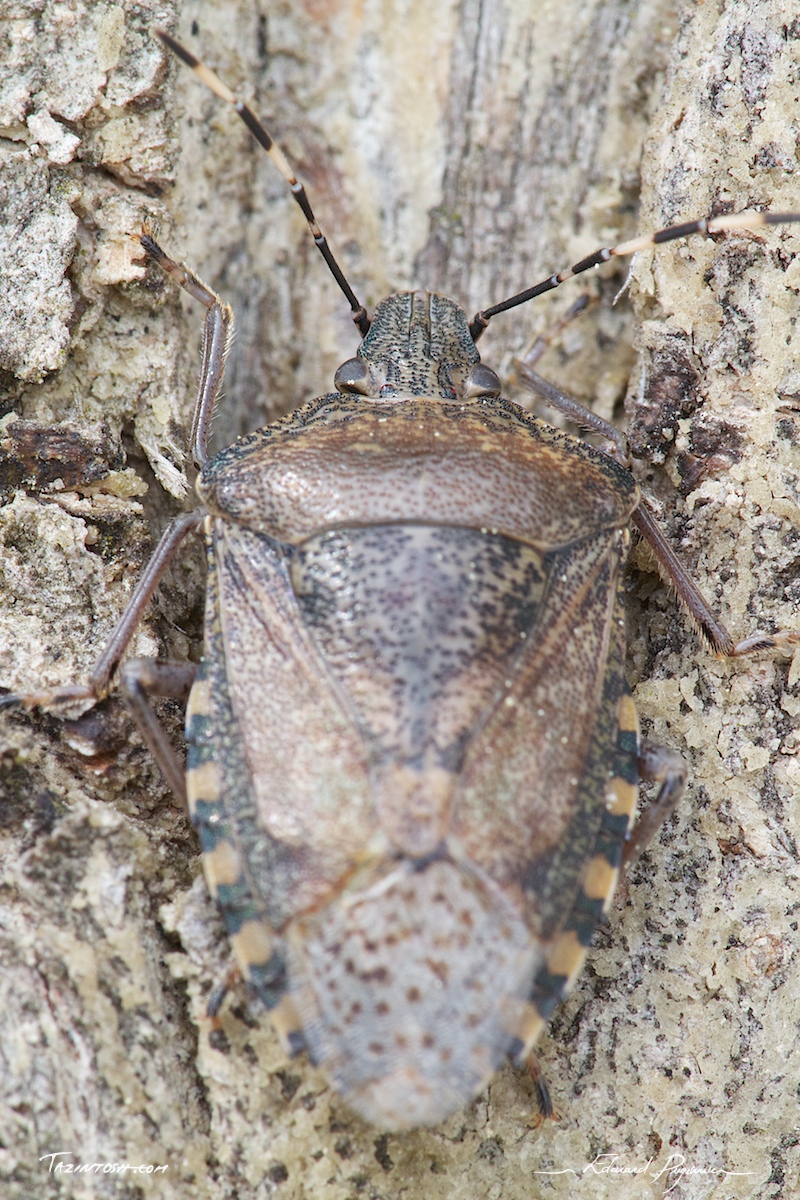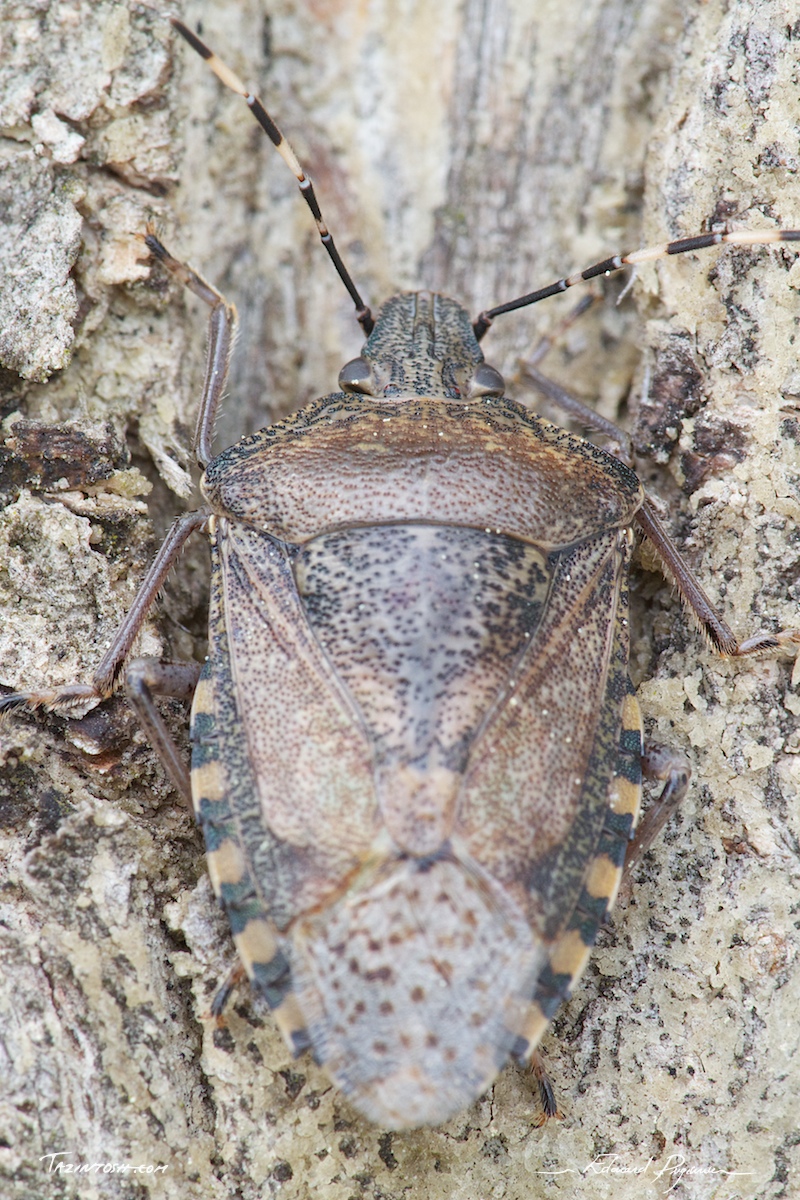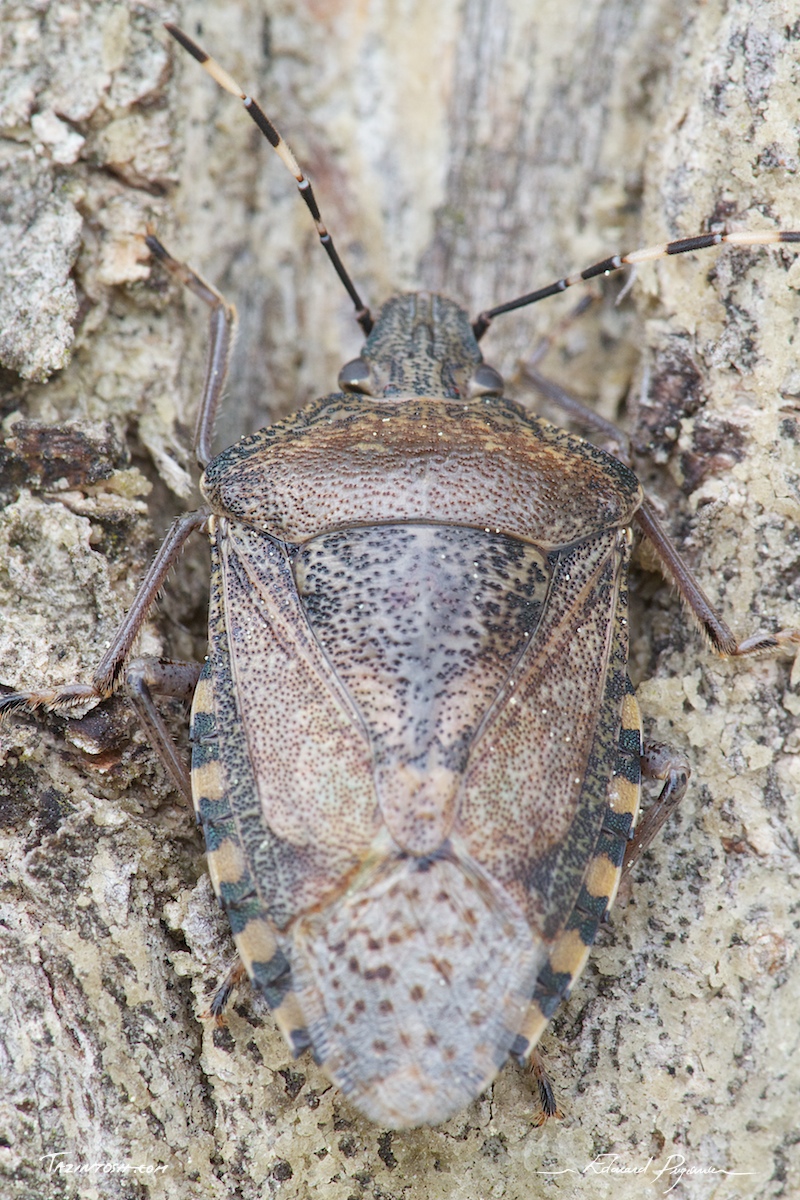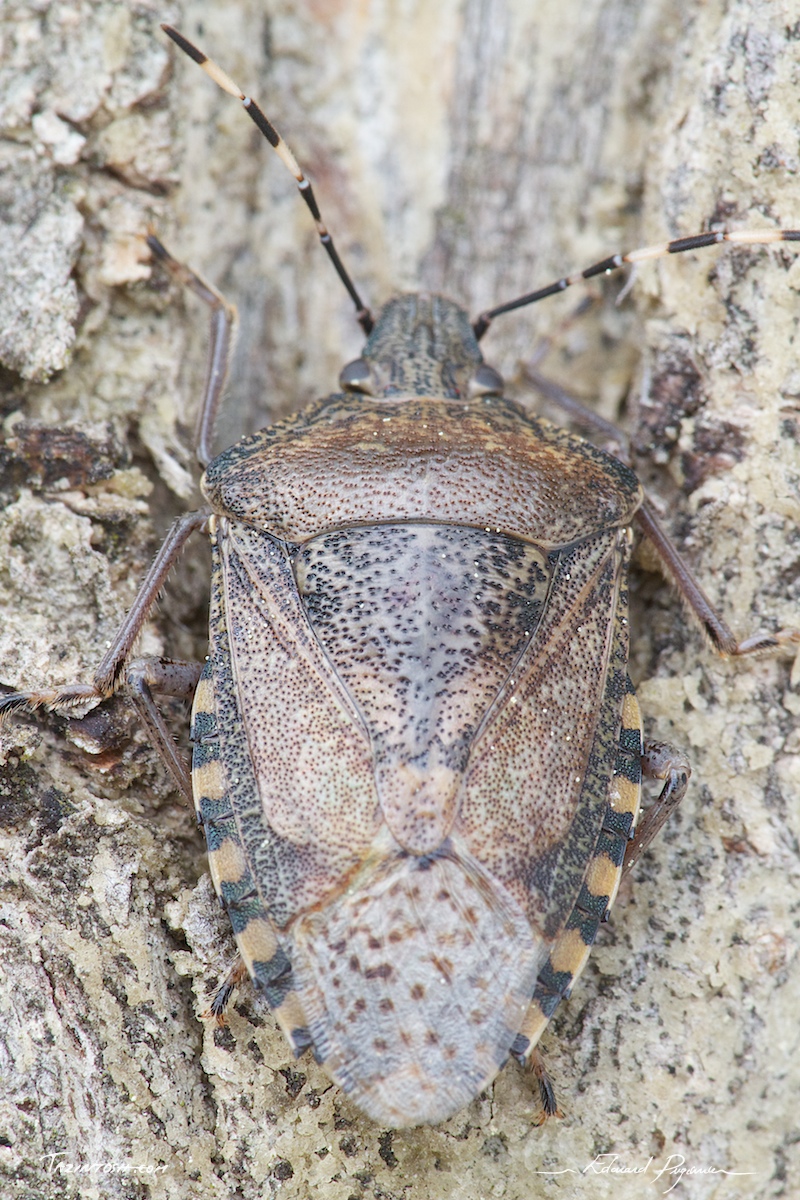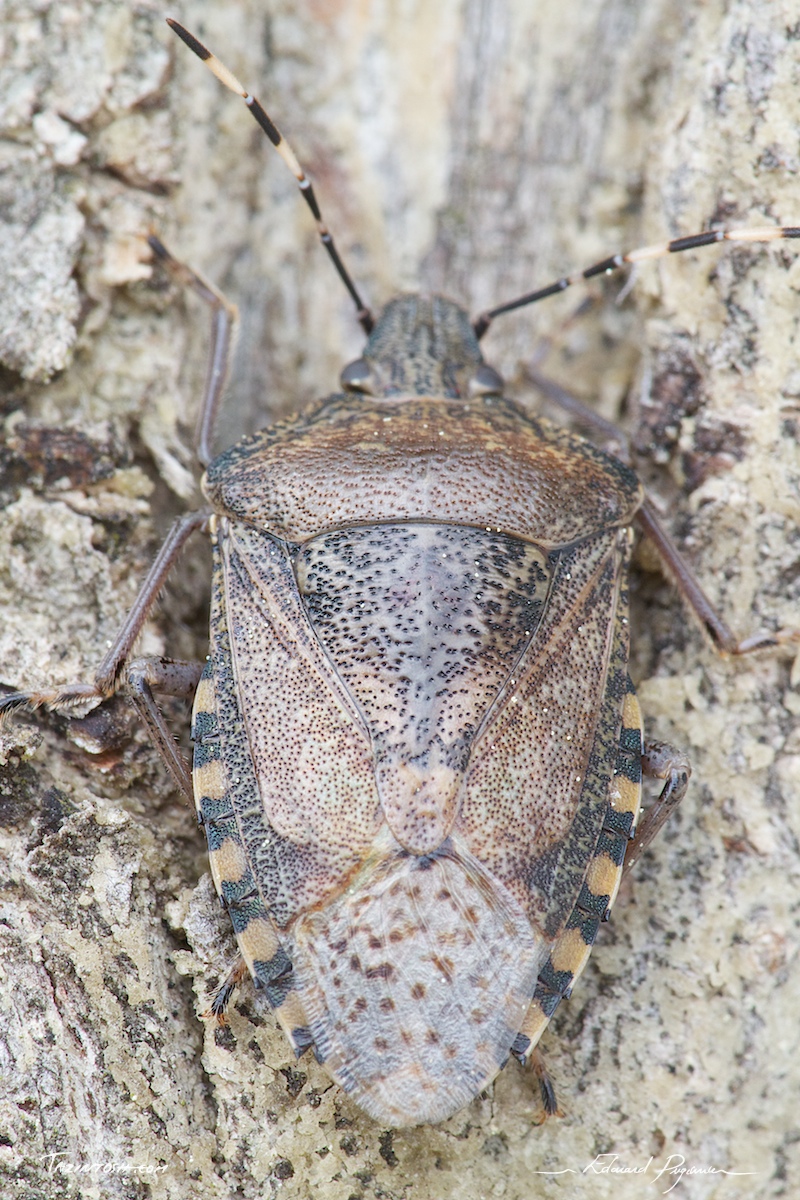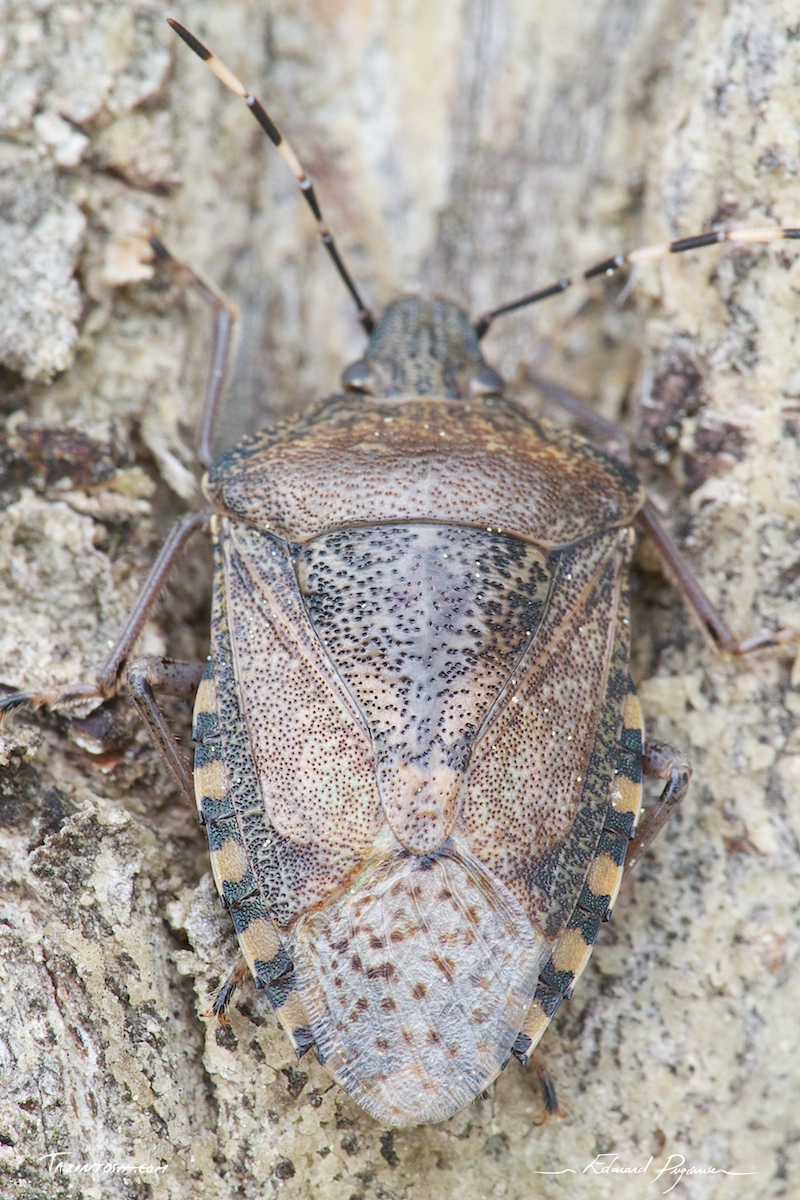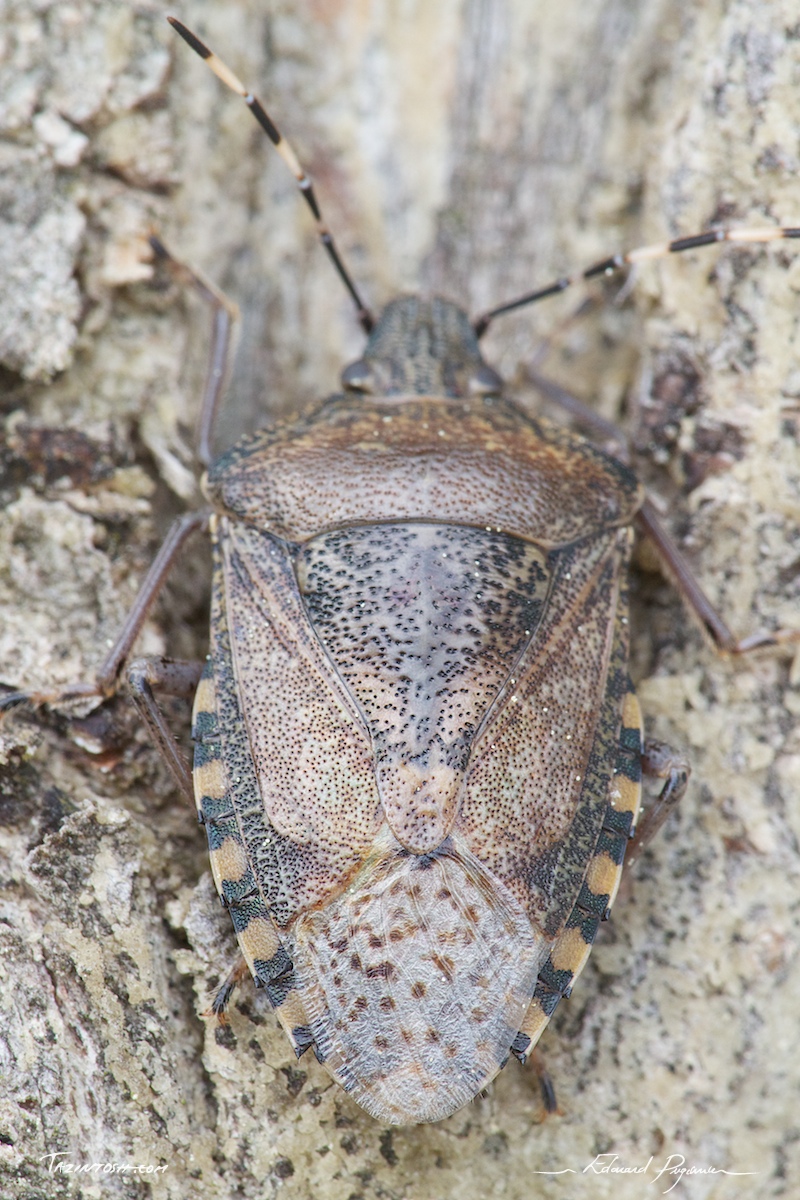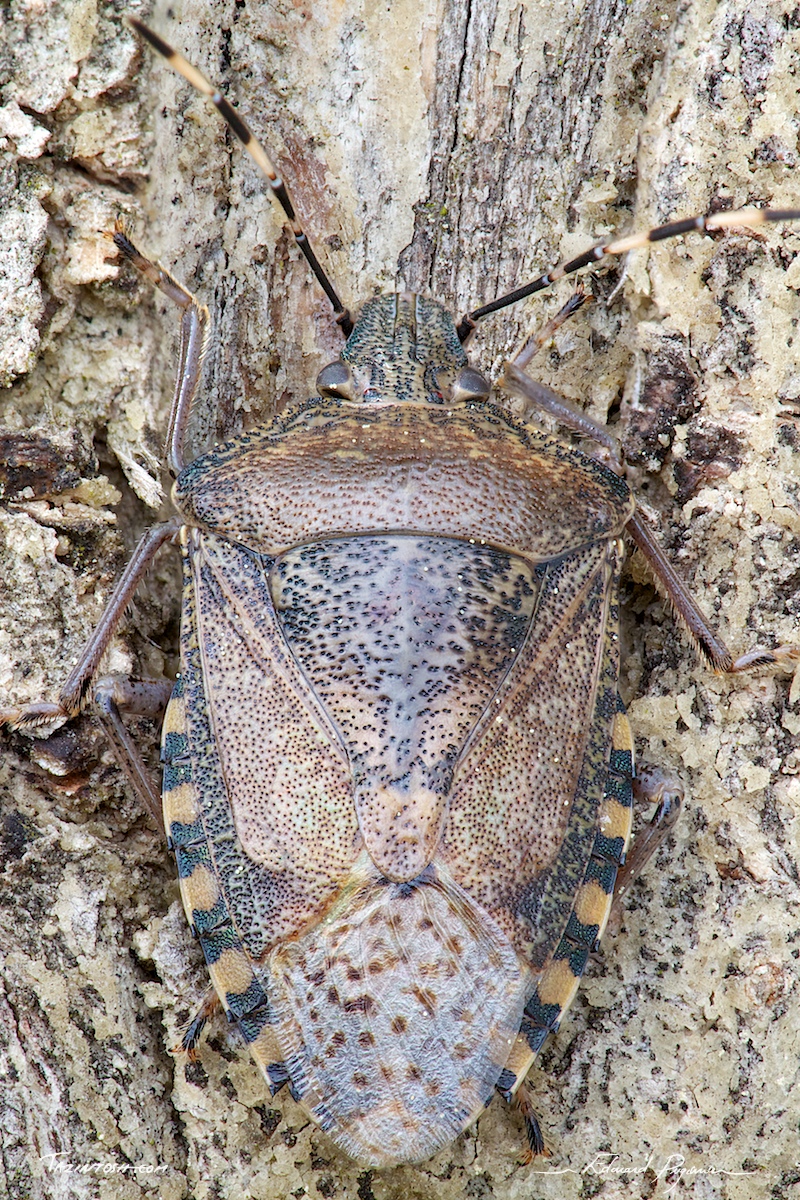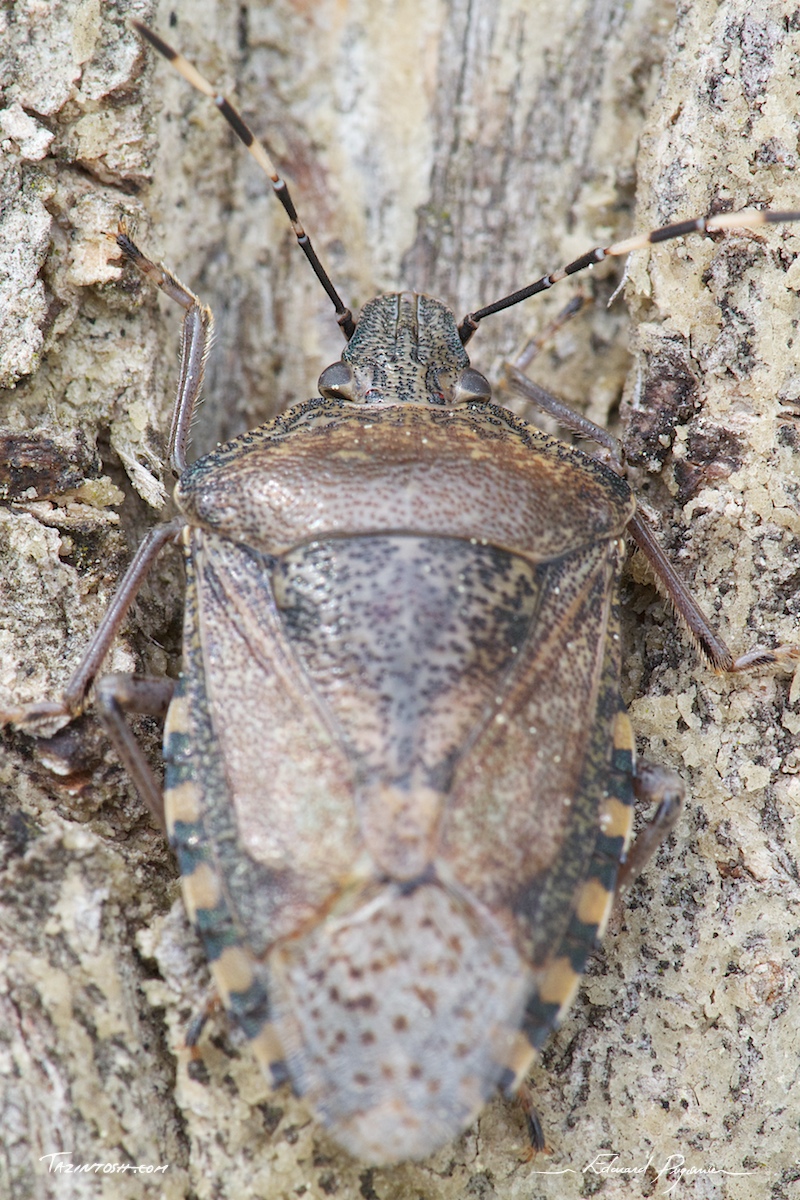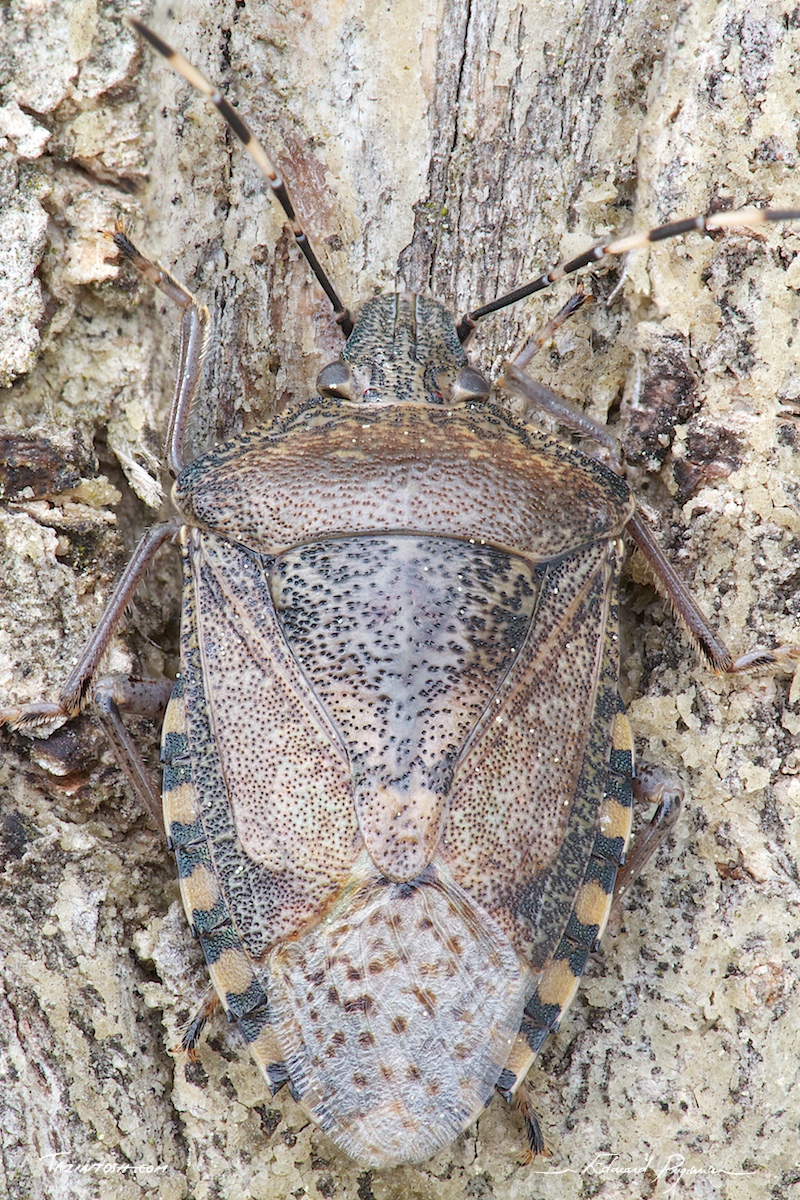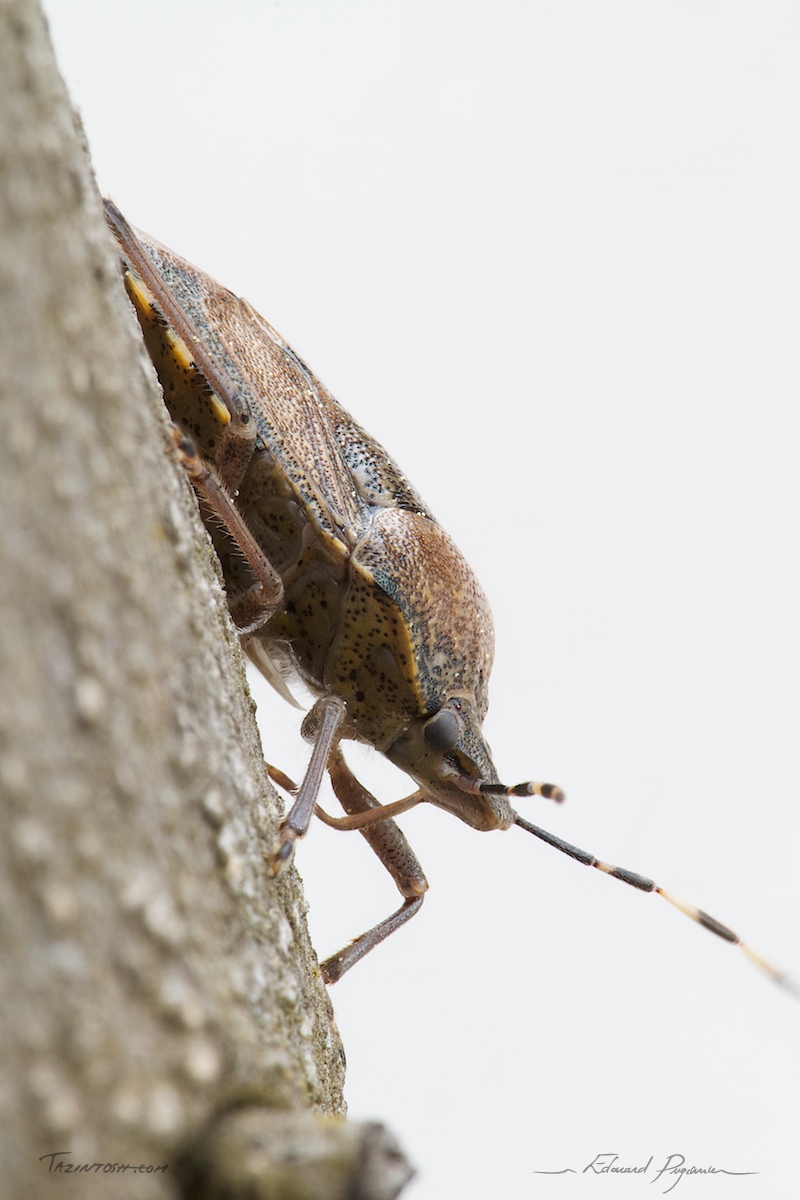You may have noticed that my activity was relatively low the last few days. Unfortunately, this will continue for the next three weeks, before I move to Germany to work on future (and upcoming) Mac applications. Before leaving next Tuesday, and As long as I can, I post these two images of a shield bug, made last Monday. In reality, there are more than two shots. Each image is the result of a stack of different focus.
This technique, called “Focus Stacking”, is mainly used in macro where the depth of field goals delivered by the lenses is relatively low (even at ƒ14 for this first shot and ƒ16 for the second image). The method is to keep the sharp parts only (“focused”) of each photo, and merge them into one final image. A solution that increases the depth of field thus covering a larger part of the subject.
Software such as Helicon Focus, Zerene Stacker, etc. are specialized to do this job, although they sometimes require “human help” to correct errors they can not really manage: the subject moved an antenna, its trunk, etc. (it happened here, I had to rebuild the bark in the background, along the left antenna).
The first image shown was made on the basis of 8 images. At each shot so I changed the focus plan and took a new photo. To change the focus plan, three ways: using the focus ring of the lens, by moving the camera, y moving the subject. Here, considering the large size of the subject, I simply used the focus ring.
Since there are only 8 shots stacked, experienced eyes will detect some imperfections on the results (intermediate focus would have been necessary). Some lenses (microscope) used by specialists of the genre have a depth of field so weak that more than 200 images are needed to cover the head of an ant!
Place to the results, note the two tabs as button below, I'm proposing to you a comparison Before|After stacking (final stacking vs a picture — among the eight – used to) and the usual comparison Before|After post-processing.
P.-S. : macro ratio is around 1.6:1 (let say to be more simple that the subject is 1,6 bigger than it's real size on the sensor) = Canon EF 180mm ƒ/3.5L Macro USM @ratio 1:1 on 7D (crop x1.6). These two images are not crop!
8 stacked focus • ƒ/14 • 1/30 • ISO 800 • +1EV
